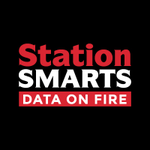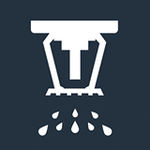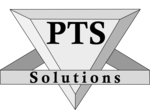What Is Fire Department Software?
Fire department software is an essential tool for modern fire departments since it allows them to efficiently manage their operations and enhance their overall response times. This software is specifically built to suit the unique needs and issues that fire departments face, making it a critical investment for any fire department wishing to streamline procedures and improve capabilities.
The major function of fire department software is to digitize and automate the many operations and processes required for fire departments to perform successfully. This includes features like incident reporting, resource management, dispatch management, equipment monitoring, training management, and more. By automating these processes, fire departments may save time and resources while focusing on their primary job of protecting lives and property.
One of the primary benefits of fire department software is its ability to consolidate and organize important data and information. With numerous modules and features, all relevant data and records can be stored in a single location, making them conveniently accessible and decreasing the danger of human error. This feature not only streamlines day-to-day operations, but it also enhances data accuracy, ensuring that fire departments have the most current and reliable information available.
Another important feature of fire department software is the capacity to improve communication and collaboration among department members. Fire departments can enhance overall coordination and reaction times by implementing features such as real-time messaging, task assignment, and scheduling. This is especially important during emergencies, when every second counts and clear communication can make all the difference.
Furthermore, fire department software frequently includes complex reporting and analytics features that provide useful insights into department performance and operations. This enables fire departments to identify areas for improvement, monitor critical metrics, and make data-driven choices that improve resource allocation and operational efficiency.
What Are The Recent Trends In Fire Department Software?
In recent years, fire department software has progressed substantially, offering fire departments with a plethora of new tools and capabilities to enhance their operations. These innovations aim to improve efficiency, safety, and overall effectiveness, allowing fire departments to better serve their communities. Here are some of the most common trends in fire department software that buyers should be aware of.
1. Cloud-based Solutions: Cloud-based fire department software has grown in popularity in recent years due to its ease of use and low cost. This type of software enables departments to access and manage information from any device with an internet connection, making it perfect for remote or distributed teams. Furthermore, cloud-based solutions often provide stronger levels of protection, including regular backups and redundant data storage, ensuring that essential information is always available.
2. Integrated Systems: To improve operations and remove data silos, fire departments are increasingly turning to integrated software systems that combine several activities into a single platform. These systems frequently contain capabilities like incident reporting, resource tracking, staff management, training records, and more. Consolidating various processes into one system reduces error and improves overall data management.
3. Mobile Applications: With the growth of mobile technology, many fire departments are using mobile applications to better their day-to-day operations. These apps enable personnel to obtain important information and communicate with one another in real time, whether on the site of an incident or out in the field. Mobile apps can also equip departments with location tracking, map integrations, and other useful features to help them make quick decisions.
4. AI And Predictive Analytics: AI and predictive analytics are becoming more prominent in fire department software, allowing departments to identify and avoid emergencies before they occur. These systems use powerful algorithms and data analysis to uncover trends and patterns, allowing departments to better allocate resources and plan their operations. Additionally, AI-powered software can aid with resource management, incident response, and personnel scheduling, among other things.
5. User-Friendly Interfaces: As fire departments invest in technology, user-friendly interfaces become increasingly important. Fire department software interfaces have evolved to be more intuitive and user-friendly, allowing even non-technical workers to navigate and operate the system efficiently. This approach strives to enhance the overall user experience and shorten the learning curve for new applications.
Benefits Of Using Fire Department Software
Fire department software is an invaluable resource for any modern fire department. Whether you run a small volunteer fire department or a large urban fire department, this software can help you streamline operations, increase efficiency, and improve overall safety.
we'll look at the main advantages of adopting fire department software and how it can help your department.
1. Enhanced Incident Management: One of the primary advantages of adopting fire department software is the ability to manage events more effectively. Fire department software, which includes real-time incident monitoring, response time analysis, and resource allocation, serves as a single platform for handling all parts of an incident. This not only improves response times, but also allows for improved coordination among various units and staff.
2. Effective Resource Management: Another significant benefit of employing fire department software is effective resource management. The software enables departments to monitor and manage their equipment, vehicles, and other resources in real time. This improves insight into resource availability and utilization, allowing departments to make educated decisions about maintenance, replacements, and budget allocation.
3. Accurate Documentation And Reporting: Fire department software also makes it easier to document and report incidents. This software minimizes the need for manual paperwork by allowing users to produce and maintain electronic records of occurrences, training sessions, equipment maintenance, and other vital data. It also provides quick access to information, making it easier to create accurate reports for compliance, training, and analysis.
4. Comprehensive Training And Certification Management: Ensuring that all workers are up to date on their training and certifications is critical for fire department operations. Fire department software provides a comprehensive solution for managing training schedules, certification expiration dates, and training hours. This not only helps to maintain compliance, but it also aids in detecting skill shortages and providing tailored training opportunities.
5. Improved Communication And Collaboration: Effective communication and collaboration are required for successful fire department operations. Fire department software offers a unified platform for communication and collaboration, including instant messaging, file sharing, and document collaboration. This improves communication between staff and allows for effective cooperation during emergencies.
6. Enhanced Community Engagement: Fire departments have an important role in the community, and fire department software improves connection with the community. With capabilities like community outreach tools, event management, and community risk assessment, departments may establish community relationships and develop specialized public safety initiatives.
Important Factors To Consider While Purchasing Fire Department Software?
When it comes to selecting fire department software, there are numerous important elements to consider to guarantee you are investing in a high-quality product that suits your department's specific requirements.
Here are some crucial aspects to consider while making your decision:
1. Functionality And Features: One of the most important considerations is the software's functionality and features. Make sure to thoroughly examine your department's specific needs and requirements, and look for software that provides the essential tools and functionality. This may involve incident management, reporting, communication tools, and system integration.
2. User-Friendliness: Fire department software should be simple and straightforward to use for all members of your department, regardless of technical ability. Look for software with a simple, straightforward interface that anyone can understand and use.
3. Compatibility And Integration: Make sure the software you choose is compatible with your existing systems and can work seamlessly with other applications and hardware. This will assist remove any potential issues or conflicts and ensure a smooth transfer to the new program.
4. Training And Support: Consider the level of training and support provided by the software vendor. It is critical that your department can utilize the program successfully and troubleshoot any issues that arise. Look for companies who give comprehensive training and continuous technical assistance.
5. Security And Compliance: As with any product, security is a key concern. Make certain that the software you chose has adequate safeguards in place to protect sensitive data and adheres to industry norms and standards. This may include features like data encryption, secure logins, and regular upgrades and maintenance.
6. Cost: While finance may not be the most significant factor in ensuring your department's safety and efficiency, it is still necessary to examine the cost of the software and ensure it fits within your budget. Consider any additional costs, such as training, support, and maintenance fees.
7. Reviews And Reputation: Look into the program vendor and read reviews from other fire departments who have utilized the software. This will offer you an impression of the software's usability, dependability, and customer service. Look for providers who have a strong reputation in the business. When choosing fire department software, keep these criteria in mind to ensure that the program meets your department's needs while also improving efficiency and safety. Remember to thoroughly consider your alternatives and select a trusted service to get the most out of your investment.
What Are The Key Features To Look For In Fire Department Software?
When selecting the best fire department software, there are a few crucial aspects to look for to ensure that it fulfills your department's specific requirements. These features are required for the efficient and successful management of emergency response operations, training, and administrative duties.
1. Incident Management: One of the most important elements of fire department software is its capacity to handle all parts of an incident, from receiving emergency calls to dispatching and tracking units in real time. This feature enables greater coordination and communication between departments and first responders, resulting in faster reaction times and better outcomes.
2. Resource Management: Another important aspect to consider is resource management. This covers the monitoring and administration of equipment, vehicles, and staff. An successful program should include a centralized database for all resource information, such as maintenance schedules, availability, and certifications.
3. Information And Analytics: Accurate and timely information is critical for assessing the performance of your department and identifying opportunities for improvement. Look for software that allows you to create bespoke reports and use advanced analytics to make data-driven decisions and improve overall operations.
4. Training And Certification Management: Firefighters must receive frequent training and maintain multiple certifications to ensure they are prepared for a variety of emergency circumstances. A decent software solution should include a dedicated module for tracking training, certifications, and expiration dates, making it easy to monitor compliance and protect the safety of your personnel.
5. Mobile Functionality: In today's fast-paced world, having mobile-friendly software is essential. This enables real-time updates, communication, and mobile access to crucial information, ensuring that first responders remain connected and informed at all times.
6. Integration And Customization: Select software that integrates effortlessly with your existing systems and provides customization choices to customize the program to your department's specific requirements. This will save you time and resources while also improving the software's usability for your staff.
7. Technical Support And Training: Choose a software vendor who offers extensive technical support and training to guarantee a smooth transition and adoption of the product. This will also help with troubleshooting and future system updates or modifications.
Why Do Businesses Need Fire Department Software?
Businesses, large and small, rely on fire services to protect their assets and employees from potential fire threats. In emergency situations, time is of the importance, therefore having efficient and effective communication and management systems in place is critical. This is where firefighting software comes into play. Fire department software provides a wide range of features and capabilities that help businesses manage and prepare for fire emergencies.
These include fire incident reporting, communication and coordination between fire services and enterprises, thorough inspection and compliance tracking, and in-depth incident analysis and reporting. One of the primary reasons why organizations require fire department software is for compliance. Fire laws and regulations are continuously changing, making it difficult for businesses to keep up with the most recent standards.
Fire department software streamlines the compliance process by automating inspections, tracking compliance requirements, and creating regulatory reports. Fire department software also helps businesses improve their overall safety and preparation. Automatic alerts and notifications enable organizations to keep informed about potential hazards and take required safeguards.
The program also enables real-time communication and coordination between businesses and fire services, allowing for a quick response in the event of an emergency. Another important feature of fire department software is the capacity to track and analyze fire incident data. This data can be used to discover trends and patterns, allowing organizations to recognize potential hazards and take precautions.
This research also helps fire departments make decisions and allocate resources for future situations. To summarize, organizations require fire department software to maintain compliance with fire laws and regulations, increase safety and disaster readiness, expedite communication and coordination, and properly analyze and track fire incidence data. Investing in this software not only protects businesses from potential losses, but also helps to ensure the safety of their personnel and property.
How Much Time Is Required To Implement Fire Department Software?
The time necessary to establish fire department software varies according to your department's specific needs and the software you choose. However, on average, the implementation phase can last from a few weeks to a few months. First and foremost, it is critical to recognize that the implementation process must not be rushed.
Taking the time to properly plan and prepare for the deployment will result in a more seamless and successful transition to the new program. The first stage in the implementation process is usually an examination of your department's existing processes and workflows. This provides a better knowledge of how the software can be adjusted to your individual requirements.
From there, the software must be adjusted and tailored to meet your department's specific needs. This can take anywhere from a few days to a few weeks, depending on how complex your department's processes are and how powerful the software is. Once the software has been configured, testing and training are required.
This is critical to ensuring that all department members are comfortable and competent in utilizing the software. Training might last from a few days to a few weeks, depending on the size of your department and the quality of instruction required. Finally, the implementation process will be completed with the software deployment and a period of monitoring and troubleshooting as the department adjusts to the new system.
What Is The Level Of Customization Available In Fire Department Software?
Fire department software provides numerous customization possibilities to fit the unique demands of each department. This involves the customisation of features, workflows, and user interfaces. The level of customization possible varies by software and provider, but there are generally three levels of customization: basic, intermediate, and advanced. At the most basic level of customization, fire department software allows you to add or remove specific features or modules.
This allows departments to customize the program to meet their individual requirements and budget. For example, a smaller department may only require basic incident reporting and scheduling capabilities, but a larger department may require inventory management and budgeting facilities. At the intermediate level, departments can customize workflows and processes inside the software.
This enables users to customize the software to fit their existing operations and procedures, resulting in a smooth connection with their present practices. For example, a department can set up reminders for inspections and duties, as well as generate automated reports for specified events. Finally, at the highest level of customisation, fire department software provides the greatest freedom and control.
This includes the option to build custom fields, forms, and templates based on the department's specific needs. A department, for example, can build customized incident report forms or training logs that are tailored to their rules and documentation requirements. When considering the level of customization provided by fire department software, agencies should keep their individual demands and goals in mind.
A higher level of personalization may incur a higher cost, but it can significantly increase efficiency and effectiveness in everyday operations. Understanding the level of flexibility offered allows departments to make an informed decision about which software best meets their needs and budget.
Which Industries Can Benefit The Most From Fire Department Software?
Fire department software is an important instrument for streamlining and improving the operations of fire agencies. Its advantages are not confined to a single business, and it may be used in a variety of organizations concerned with emergency response and public safety. However, some businesses will gain the most from this software due to their unique needs and requirements.
we'll look at which sectors can profit the most from fire department software.
1. Fire Departments: As expected, fire departments are the leading consumers of fire department software. With the growing demand for rapid and effective emergency response, fire departments want a dependable and efficient solution to manage their operations. Fire department software can help with dispatching resources, recording occurrences, and maintaining equipment inventory, among other important responsibilities. This program can help fire agencies save time and effort while responding to situations quickly.
2. Law Enforcement Agencies: Police departments and sheriff's offices collaborate closely with fire departments to address emergency situations. Fire departments can link software with their systems to deliver real-time updates on active occurrences. This integrated approach can increase communication and coordination between the two agencies, resulting in a more effective response to emergencies.
3. Emergency Medical Services (EMS): EMS services play an important role in delivering medical care during an emergency. Fire department software can help these organizations manage their resources, track occurrences, and communicate with other emergency response teams. The program can also save patient information and medical documents, allowing EMS personnel to retrieve them rapidly during an emergency. This integration may improve the overall quality of care delivered by EMS agencies.
4. Industrial Organizations: Industrial organizations, such as factories, warehouses, and manufacturing plants, can benefit greatly from fire department software. These organizations are frequently required to have a fire brigade on-site or nearby. Implementing fire department software allows them to better manage their fire risks, conduct fire safety inspections, and coordinate with local fire departments in the event of an emergency. This software can also help in the creation and maintenance of the organization's emergency response plans.
5. Educational Institutions: Schools and universities are responsible for the safety and well-being of their students and staff. Fire department software can assist these organizations in developing and implementing emergency response plans, carrying out fire drills, and monitoring fire safety equipment. In the event of a fire emergency, the software can let the school coordinate with the local fire department and communicate with parents or guardians.
Conclusion
After reviewing the various features, benefits, and considerations of fire department software, it is clear that investing in this technology can greatly enhance the efficiency and effectiveness of any fire department. Whether you are a small volunteer department or a large metropolitan agency, there is a software solution that can meet your unique needs.
When evaluating which software to purchase, it is important to carefully consider your department's specific requirements, budget, and any integrations with other systems. It is also crucial to involve key stakeholders and end-users in the decision-making process to ensure that the selected software will meet their needs and be successfully implemented into daily operations.
In addition, paying attention to the reputation and customer support of the software provider can greatly impact the overall satisfaction and success of using the software. And lastly, continuously training and updating software skills is crucial for getting the most out of your investment and staying up to date with industry standards.
In conclusion, fire department software offers a wide range of benefits such as improved response times, better resource management, and enhanced data tracking and analysis. With careful consideration and evaluation, fire department software can greatly benefit any fire department and improve their overall operations and performance. Keep these points in mind as you begin your search for the perfect software solution for your department.






















